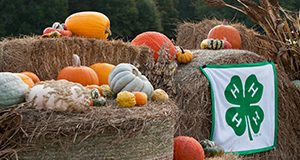Facilities are one of the most important considerations for housing market swine projects in groups. This 5-page document discusses basic facilities requirements, weather protection, spacing requirements, penning arrangements, and fencing materials. Written by Alyssa Schortinghouse, and published by the UF/IFAS 4-H Youth Development Department, September 2020.
https://edis.ifas.ufl.edu/4h410
Tag: 4-H Swine
Cooperative Unit Systems: 2. Organizational Strategies
This 8-page document introduces the core requirements and organizational considerations for replicating a cooperative animal unit. Written by Alyssa Schortinghouse, and published by the UF/IFAS 4-H Youth Development Department, August 2020.
https://edis.ifas.ufl.edu/4h409
Selecting Pigs for Youth Swine Shows (4HSWG04/4H210)
 Are you interested in participating in a swine show? This 8-page fact sheet will help youth exhibitors determine how and where to purchase a project pig and provide information on what the student should look for when purchasing the pig in order to do well. Published by the UF Department of 4-H Youth Development, April 2012.
Are you interested in participating in a swine show? This 8-page fact sheet will help youth exhibitors determine how and where to purchase a project pig and provide information on what the student should look for when purchasing the pig in order to do well. Published by the UF Department of 4-H Youth Development, April 2012.
http://edis.ifas.ufl.edu/4h210
Best Practice Checklist for Management of a Swine Show for Youth (AN274)
 The management team for a swine show for youth should have a plan to manage the facilities, pigs, and personnel in a way that allows the show to be as stress-free and educational as possible. This 3-page fact sheet includes a checklist of information about unloading pigs, the size of the show ring, and pig handling training so that show managers know how to prepare for their show. Written by Chad Carr and Justin Crosswhite, and published by the UF Department of Animal Science, December 2011.
The management team for a swine show for youth should have a plan to manage the facilities, pigs, and personnel in a way that allows the show to be as stress-free and educational as possible. This 3-page fact sheet includes a checklist of information about unloading pigs, the size of the show ring, and pig handling training so that show managers know how to prepare for their show. Written by Chad Carr and Justin Crosswhite, and published by the UF Department of Animal Science, December 2011.
http://edis.ifas.ufl.edu/an274
Conducting a Successful Livestock Show for Youth (AN268)
 Want to plan a livestock show for youth that will serve as the educational summit of the livestock project experience? Make sure the entire event is as stress-free as possible for the livestock, youth exhibitors, their families, and show management and as educational as possible for youth exhibitors, their families, and all public spectators. Consider the recommendations in this 4-page fact sheet written by Chad Carr, Justin Crosswhite, Jennifer Shike, and Heather Shultz, and published by the UF Department of Animal Science, December 2011.
Want to plan a livestock show for youth that will serve as the educational summit of the livestock project experience? Make sure the entire event is as stress-free as possible for the livestock, youth exhibitors, their families, and show management and as educational as possible for youth exhibitors, their families, and all public spectators. Consider the recommendations in this 4-page fact sheet written by Chad Carr, Justin Crosswhite, Jennifer Shike, and Heather Shultz, and published by the UF Department of Animal Science, December 2011.
http://edis.ifas.ufl.edu/an268
Incorporating Growth Performance with Youth Market Hog Shows (AN257)
Florida, like many other states, has extensive youth swine exhibition programs but little to no commercial pork production. To remain relevant, the focus of these programs should be both educational and industry-applicable. By incorporating growth performance, youth swine shows can provide opportunities for education about growth performance and lean gain per day on test, and reward genetically superior animals. This 6-page fact sheet explains how such an exhibition program would work. Written by Chad Carr and Travis Arp. Published by the UF Department of Animal Sciences, January 2011.
http://edis.ifas.ufl.edu/an257
AN252 Ultrasound and Carcass Merit of Youth Market Hogs
AN252, a 5-page illustrated fact sheet by Chad Carr, Dwain Johnson, and Mark Shuffitt, describes the process whereby ultrasound evaluation of the live animal can be used to predict fat thickness and loineye area to determine the carcass merit of youth market hogs. Includes references. Published by the UF Department of Animal Science, October 2010.
http://edis.ifas.ufl.edu/an252
